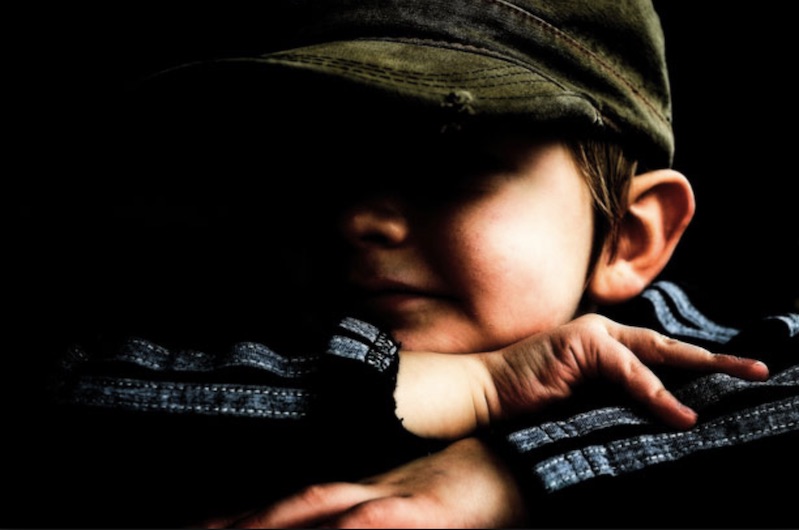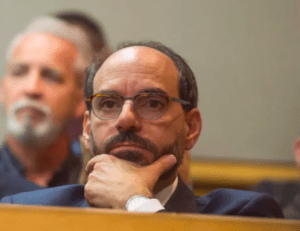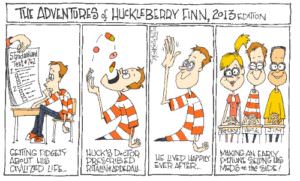How the Heart Can Heal the Brain
"The Boy Who Was Raised as a Dog" is a powerful testament to how the brain can heal, through loving relationships, from even the most extreme cases of trauma. PublicDomainPictures.net
PublicDomainPictures.net

Purchase in the Truthdig Bazaar
Reviewed by Alexis Camins
“The Boy Who Was Raised as a Dog and Other Stories From a Child Psychiatrist’s Notebook: What Traumatized Children Can Teach Us About Loss, Love, and Healing”
A book by Bruce D. Perry, M.D., Ph.D., and Maia Szalavitz
“Mom is lying. Mom is hurting me. Please call the police.”
Few things are more heartbreaking than when the trust of a child has been broken. It’s a betrayal of the unspoken compact between a defenseless creature and its caretaker: I’m trusting you with my life. As someone with two small young ones of my own, reading through the truly horrific stories of neglect, abuse and violence inflicted on children and infants in “The Boy Who Was Raised as a Dog and Other Stories From a Child Psychiatrist’s Notebook: What Traumatized Children Can Teach Us About Loss, Love, and Healing,” by Dr. Bruce D. Perry and Maia Szalavitz, was an absolutely brutal endeavor. Passages sickened me enough that at times, I had to put the book down. The vivid depictions of trauma and their damaging effects made this a truly difficult read. The scenarios that Perry and Szalavitz impart are filled not just with parental mistakes made out of ignorance or circumstances beyond control, but deliberate acts against the helpless committed by the very people who should be protecting them.
Perry and Szalavitz’s book, first released in 2006 and since revised and updated, has become a textbook for therapists and psychologists, but also for anyone who works with or comes in contact with populations who may have suffered trauma. (I also highly recommend it for parents and caregivers who can make it through the tougher parts, because it informs one’s understanding of children beyond the usual how-to-parent fare.) Trauma-aware or trauma-informed care is a now part of the common vernacular across education, mental health, juvenile justice and child welfare, thanks in large part to Perry’s work.
“The Boy” reads less like a textbook and more like an extended detective story, with a curious, empathic therapist in the place of a hard-nosed private eye. “The Boy” retells some harrowing stories in great detail, but what saves the book from being one grim account after another is the science and the heart it is infused with. Perry and Svalavitz lay a solid foundation for the reader, grounded in the science of brain development, and layer on heart-rending anecdotes that together shed light into why and how trauma affects the very biology of the brain. Using stories from his own hands-on clinical therapy and research, Perry peels away at the mystery, and the result is a powerful, moving testament, graced with sensitivity, compassion and above all, hope.
Click here to read long excerpts from “The Boy Who Was Raised as a Dog” at Google Books.
As a child psychiatry fellow starting out at the University of Chicago in 1987, Perry did not purposely seek to uncover the effects of trauma on the human brain. During his early years as a therapist, knee-jerk diagnoses for attention deficit disorder (ADD) and oppositional defiant disorder were already very much in vogue, along with their accompanying pharmaceutical prescriptions. Neuroscience was not embraced by child psychiatry.
But when Perry meets his first patient, a young girl named Tina, he realizes that simply looking at the patient’s symptoms revealed only a part of her story. Tina suffered repeated sexual abuse by the son of her babysitter for two years, between the ages of 4 and 6. She was bound, raped, sodomized and threatened to be killed if she uttered a word. The boy was later caught and the abuse stopped, but a year later, Tina’s school reported that she had exposed herself to older children, used sexual language and tried to engage them in sex play. She refused to follow directions and didn’t pay attention in class. An adviser of Perry’s put Tina in the ADD bucket and suggested treating her with drugs.
Perry’s empathy led him down a different path. One bitter Chicago evening, against his better clinical judgment, Perry offers Tina and her mother a ride home, after they had been waiting in vain for a bus in the cold winter night. Along the way, Perry gets a glimpse of his patient and her family’s life:
How difficult this mother’s life was . . . all alone caring for three children, no money, only episodic and often tedious work, no extended family nearby. . . . The drive home took me through some of the poorest neighborhoods in Chicago. . . . I felt I knew much more about Tina. She had grown up in a world so very different from mine. And somehow that had to be related to the problems that brought her to see me.
This humble curiosity would be the foundation of Perry’s research; he began to understand that genetics and bad luck may not be the only reasons for a child’s abnormal behavior. With encouragement from a different adviser, Perry began to consider environmental and social factors when assessing patients, and he started to look for ways that developmental delays may be linked to past events in a child’s life.
The brain is organized from the inside out, adding increasingly complex layers in a sequential order: “The lower and most central regions of the brainstem and diencephalon are the simplest. They evolved first and they develop first as a child grows. As you move upward and outward, things get increasingly more complex with the limbic system. The cortex is more intricate still, the crowning achievement of brain architecture.” Repeated trauma when the brain is still developing its most basic parts and functions can affect everything from impulse control to stress regulation to speech and language development. Therefore, the earlier the trauma is experienced, the more severe and widespread the damage. Perry theorized that in Tina’s case:
The repeated activation of her stress response systems from a trauma endured at a young age, when her brain was still developing, had probably caused a cascade of altered receptors, sensitivity, and dysfunction throughout her brain. . . . Her attention and impulse problems might be due to a change in the organization of her stress response neural networks, a change that might have once helped her cope with her abuse, but was now causing her aggressive behavior and inattention to class work in school.
Perry began to see these kinds of correlations in his subsequent cases. One young girl who was referred to him had an incomprehensibly horrific story. Three-year-old Sandy “witnesses her mother being raped and murdered. She has her own throat cut, twice and is left for dead.” A year later, Sandy had aggressive outbursts and on other occasions would jump at the sound of a doorbell. She also refused to drink milk, much less look at a milk bottle.
Clearly, Sandy had suffered immense trauma, and exhibited signs of post-traumatic stress disorder, then a relatively new psychiatric diagnosis introduced in 1980. Since Sandy was being asked to testify in an upcoming trial for her mother’s murder, Perry was tasked to prepare her to revisit that horrific day. Perry patiently worked to earn Sandy’s trust over the course of numerous sessions, in which Sandy was given full control. Eventually, she was ready to recount what happened that night. Her mother’s boyfriend had rung the doorbell and came into the house yelling. When Sandy came out of her room, “the assailant cut her throat—twice. Sandy immediately collapsed. Later, she regained consciousness and attempted to ‘wake up’ her mother.” It turns out that during the 11 hours she wandered the apartment alone, attempting to wake her mother once in a while, Sandy took milk from the refrigerator and gagged when she tried to drink some. It oozed through the slit in her throat. She tried to give her mother some, but she “was not thirsty.”
The behaviors Sandy displayed were directly linked to her horrific experiences. In fact, because the events had so scarred Sandy, her body continued to react with the same fight-or-flight responses that it had used to protect her on that fateful day. Perry explains that “many post-traumatic psychiatric symptoms, in fact, are related to either dissociative or hyperarousal responses to memories of the trauma.” Sandy’s outbursts seemed to come from nowhere, because her foster parents did not know the details of the crime, but Perry made the connection, and the link between trauma and behavior seemed to grow stronger.
Like a patient detective, Perry follows the breadcrumbs and his trauma-informed theory evolves. The years of research and trial chronicled in “The Boy” leads Perry and his colleagues to develop what is now known as the Neurosequential Model of Therapeutics: a multifaceted therapeutic approach encompassing everything from cognitive therapy, medicine, massage and art and music therapy. Essentially, a thorough medical and psychological assessment pinpoints the timeline of the abuse or neglect, and specific types of therapy are provided in a developmentally appropriate sequence, allowing brain development to resume where it was halted or derailed. Perry and his team then tested their new therapeutic model on some of the toughest cases Perry came across, including the titular boy who was raised in a cage for the first five years of his life. Through a series of events, Justin wound up under the care of his grandmother’s live-in boyfriend, Arthur, a dog breeder in his late 60s who never had children and had been a loner for most of his life, and most likely suffered from mild mental retardation himself:
He raised Justin as he raised his other animals: giving him food, shelter, discipline and episodic direct compassion. Arthur wasn’t intentionally cruel: he’d take both Justin and the dogs out of their cages daily for regular play and affection. But he didn’t understand that Justin acted like an animal because he’d been treated as one, and so when the boy ‘didn’t obey,’ back into the cage he went. Most of the time, Justin was simply neglected.
The result: Justin was a nonverbal 6-year-old, prone to throwing food and feces; “a bony child in a loose diaper soaked in urine . . . [he] rocked back and forth, whimpering a primitive self-soothing lullaby.” Perry approached him more cautiously than any patient before him and over a course of dramatic initial meetings, he slowly and patiently earned Justin’s trust. The psychiatric, occupational and speech therapy Perry and his team began to provide met Justin at his developmental level, rather than where he was supposed to be, and allowed him to make astonishingly quick progress. But equally as vital were the daily visits from a dedicated psychiatric staffer and Perry himself. Justin began to smile and even make jokes. Justin’s “once dormant, underdeveloped neural networks began to respond to these new repetitive patterns of stimulation. His brain seemed to be like a sponge, thirsty for the experiences it required, and eagerly soaking them up.”
Within six months, Justin was able to be transferred to a foster family and was ready for kindergarten by age 8. Perry received a letter from his foster parents and enclosed “was a picture of Justin all dressed up, holding a lunch box, wearing a backpack, and standing next to a school bus. On the back of the note, in crayon, Justin himself had written, ‘Thank You, Dr. Perry. Justin.’ I cried.”
Through his work with the children who suffered in the Branch Davidian compound, Perry witnesses how compassionate therapy can undo even the most willful of damage. Through his work with a teenager who experiences a catatonic state, he understands that abuse can directly alter the brain chemistry of an individual even years later, and how with proper medical and therapeutic intervention, this impact can be lessened and even reversed. Through his work with an adopted boy from Russia, who suffered severe neglect in an orphanage at the most critical early stages of his development, Perry discovers how providing the kind of guidance and attention that a child never received during the trauma he experienced, the brain finds ways to “catch up” and resume the path of proper development.
When the theory finally comes together, the moment is revealed as Perry sits with a group of first-graders. He has come into the class of the Russian boy, Ted, who has been struggling both socially and academically. With the boy present, Perry explains to his classmates what he had gone through early in his life, how it had affected the growth of his brain, and how this was causing some of his behavior. With the patience he’d acquired through years of experience, Perry goes on to invite the class to support their new classmate, with their patience, understanding and, when needed, guidance.
It is a quiet but powerful scene, in which Perry simplifies decades of research down to its core humanistic essence so elegantly that 7-year-olds understand, empathize and rise to help one of their own in need. With the support of his peers, Ted improves almost immediately and “What had been a downward spiral of rejection, confusion and frustration became instead a cascade of positive reinforcement, which fed on itself. The huge gaps in developmental age across emotional, social, motor and cognitive domains slowly filled in.”
Humans are social animals and “could never have survived without deeply interconnected and interdependent human contact. The truth is you cannot love yourself unless you have been loved and are loved. The capacity to love cannot be built in isolation.” When neglect or trauma deprives a young child of that connectedness, it makes sense that only a return to connection can heal him or her. In “The Boy Who Was Raised as a Dog,” Perry’s compassion is that first hand that reconnects those who have been isolated, and he makes clear that despite what young children may have experienced, in the end, loving relationships can heal them. Perry may be a scientist, but in “The Boy,” he insists that the brain can heal from even the most extreme cases of trauma and neglect and the primary engine of that healing is, in fact, the heart.
“Relationships are the agents of change and the most powerful therapy is human love.”
Your support matters…Independent journalism is under threat and overshadowed by heavily funded mainstream media.
You can help level the playing field. Become a member.
Your tax-deductible contribution keeps us digging beneath the headlines to give you thought-provoking, investigative reporting and analysis that unearths what's really happening- without compromise.
Give today to support our courageous, independent journalists.





You need to be a supporter to comment.
There are currently no responses to this article.
Be the first to respond.